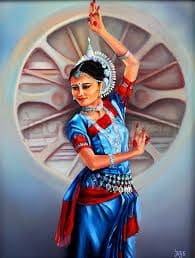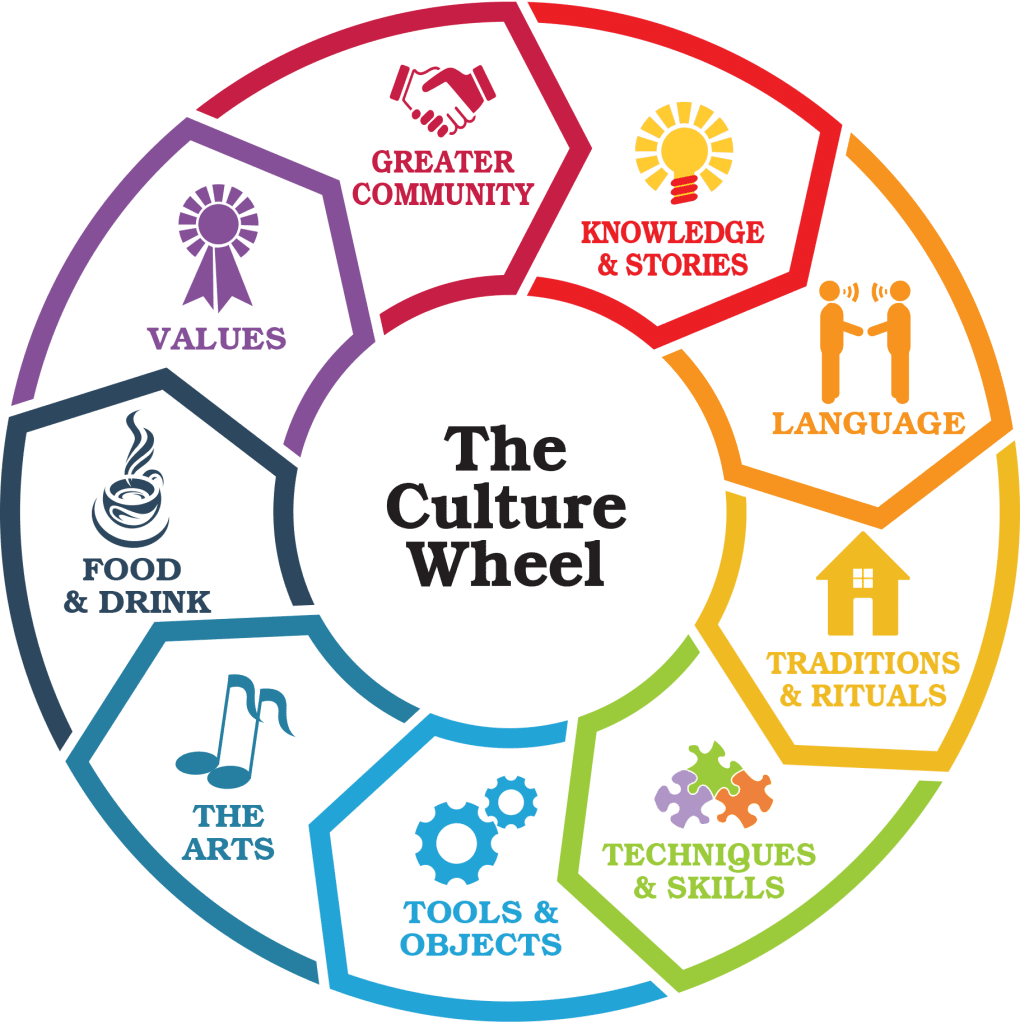 Indian classical dance is an unbroken tradition going back over to two thousand years. Classical dance in India is more than a form of entertainment. It has evolved from an expression of physical or emotional exuberance. It is more a form of worship. Apart from being places of worship, temples were also the centres of social interactions. They were the main source of inspiration and a platform for dance, music, sculpture, painting and literature. Temples became a platform for dancers. As per Hindu philosophy of Karmayoga– work is worship –all creative actions lead to a blissful spiritual experience. One can say that artists, like dancers, were seekers of the highest wisdom. All art forms connected to the temple were considered holy.
Indian classical dance is an unbroken tradition going back over to two thousand years. Classical dance in India is more than a form of entertainment. It has evolved from an expression of physical or emotional exuberance. It is more a form of worship. Apart from being places of worship, temples were also the centres of social interactions. They were the main source of inspiration and a platform for dance, music, sculpture, painting and literature. Temples became a platform for dancers. As per Hindu philosophy of Karmayoga– work is worship –all creative actions lead to a blissful spiritual experience. One can say that artists, like dancers, were seekers of the highest wisdom. All art forms connected to the temple were considered holy.
Today I am trying to focus on my thoughts about values imbibed through dance influencing cultural, social and economic life. I will try to analyse dance as a way of life based on cultural, social and economic issues.
Cultural aspect
Defining cultural is difficult. Raymond Williams described culture as ‘one of the two or three most complicated words of English language’ Robert Borofsky suggest the attempts to define culture is like ‘trying to encage the wind’
Culture is a word employed in a variety of senses in everyday use but without a tangible or generally agreed core meaning. Since the early 19th century the term culture has been used in a borderer sense to describe the intellectual and spiritual development of civilisation. In due course this humanistic interpretation of culture was replaced by a more all-inclusive concept whereby culture was seen to embrace not just intellectual endeavour but the entire way of life of a people or society.
 We can use the word culture in a broad sociological framework to describe a set of attitudes, beliefs, customs, values, and practices which are common to or shared by any group. The second definition of culture has a more functional orientation, denoting certain activities that are undertaken by people, and the product of those activities, which have to do with the intellectual, moral, and artistic drawing upon the enlightenment and education of the mind rather than the acquisition of purely technical or vocational skills. As per the second definition culture could be-
We can use the word culture in a broad sociological framework to describe a set of attitudes, beliefs, customs, values, and practices which are common to or shared by any group. The second definition of culture has a more functional orientation, denoting certain activities that are undertaken by people, and the product of those activities, which have to do with the intellectual, moral, and artistic drawing upon the enlightenment and education of the mind rather than the acquisition of purely technical or vocational skills. As per the second definition culture could be-
- An activity that involve some form of creativity in their content.
- They are concern with the generation and communication of symbolic meaning
- That their output includes, at least potentially, some form of intellectual property.
We can clearly see all 3 characteristics in dance. Dance is creative in its content; dance can communicate with symbolic meaning, and dance is a form of intellectual property.
As the one generation trains and teaches ‘the art of dance’ to the next generation we are forwarding culture to the new generation. Here we are also following very first law of nature, where natural asks us to forward and impart the knowledge we have acquired, to the future generation. This knowledge makes the younger generation strong and more adaptive to the changes happening around them, and also make them aware and well-versed with cultured.
As a young artiste when I take up dance as my way of life, I become the ambassador of culture. I vouch to be creative in my outlook, to communicate with the symbolic meaning, and it also becomes my intellectual property which I protect and forward to the younger generation.
Social aspect
Emotional enthusiasm is expressed in the form of dance from the beginning of human civilization. Dance is an expression through rhythmic body movement. Primitive man danced with belief in the Almighty. He danced for protection from evil which became an important part of rituals. This ritualistic dance took the form of tribal dance. Different tribes are recognized by the rhythm and steps of their dance. These tribes danced on every occasion such as victory in war, pacifying of elements, planting and harvesting, and so on. Dance was a vehicle of faith to establish spiritual union with the cosmic creation.
 As people began living in groups, they found joy in community. They expressed joy spontaneously through folk dance. That is how the ritualistic tribal dances further evolved as folk dances which were rooted in their daily lives. These dances were performed as joyful celebrations on various occasions like the onset of spring, first refreshing showers, harvest, birth of a child, religious festivals, and so on.
As people began living in groups, they found joy in community. They expressed joy spontaneously through folk dance. That is how the ritualistic tribal dances further evolved as folk dances which were rooted in their daily lives. These dances were performed as joyful celebrations on various occasions like the onset of spring, first refreshing showers, harvest, birth of a child, religious festivals, and so on.
Dancing became methodical as man began to think and act rationally. At every stage classical dance evolved to highly sophisticated art forms. The temples or community centres were the places to give lessons of life and truth to people. The great Bhakti movement which took place in various parts of India is an outstanding example of how art and entrainment can bring in the social renaissance.
The renaissance or the reawakening is essential in the current situation. Today the youth of the country can differentiate very confidently between hard rock, heavy metal rock, acid rock, alternative rock, pop rock and soft rock music and yet knows nothing about theour Indian classical dance styles. More students and parents enrolling to the classical dance training institutions will increase the awareness about different classical dance forms of India.
Various dance productions can narrate great stories, which can inspire the generation. We can spread the message of peace and harmony, which can prove to be boon on the backdrop of disturbing world political issues.

Economic aspect
The declaration of UNESCO’s World Decade for culture (1988-97) was intended to focus international attention on culture in national life, especially in the developing world. this project aimed specifically to shift the existing narrow concept of economic development towards a broader one where the individual human being become the object and instrument of development. it was organised around four main objectives: placing culture at the centre of development, asserting and enhancing cultural identities, broadening participation in cultural life, and promoting international cultural cooperation. It attempts to integrate cultural policy into the wider context of economic policy.
Cultural services are now at the forefront of economic growth. Which is not accidental, but rather a natural process of the development. A better analytical foundation for the creative industries can be provided by taking the perspective of an emergent market economy. The economics of the creative industries is not the same as the economics of the agricultural or industrial economy. The central economic concern cultural services is not with the nature of inputs or outputs in production or consumption, or even with competitive structures, but with the nature of the markets that coordinate the artistic industry. This particular market is complex and has distinct social dimension which we dancers have to understand
On a world stage where regional, national and international dramas are played out, art and culture can be seen as two of the most fundamental driving forces shaping human behaviour. The desire for command over material resources and artistic expressions, is an apparently, unstoppable compulsion and governs much of what we see as artistic activity. At the same time, non-material impulses towards identification, belonging, creative expression, connection with the concern for others art forms will help the whole artistic market to flourish. We dancers can become a pervasive influence on how we perceive our life, how we interpret our place in it and consequently how we behave.
The economic developments and art industry are directly related to each other. When the GDP increases the art industry flourishes and vice versa. As Indian economy is on the verge of become developed economy, number of opportunities can be expected on the horizon of art and cultural industry. With the possibility of employment generation it is essential that we take steps is providing systematic dance training and education to the youth of the country. With the alarming increasing rate of unemployment Dance as a profession will provide great employment opportunities, apart from imbibing pride for our national heritage.
*References
Cultural economics – David Throsby
Glimpses of Indian classical dance – Shubhada Varadkar

Mitali Varadkar- Inspired by her Aunt and also her Guru Smt. Shubhada Varadkar, Mitali’s tryst with Odissi began at a very tender age, as she watched her aunt Smt. Shubhada Varadkar practice and perform. She has been representing the great dance form, along with her Guru and as soloist. Graded Odissi artist of Mumbai Doordarshan, Mitali has completed her Masters in Economics and is a professor of economics. Her performance is characterized by gaiety, grace and strength
